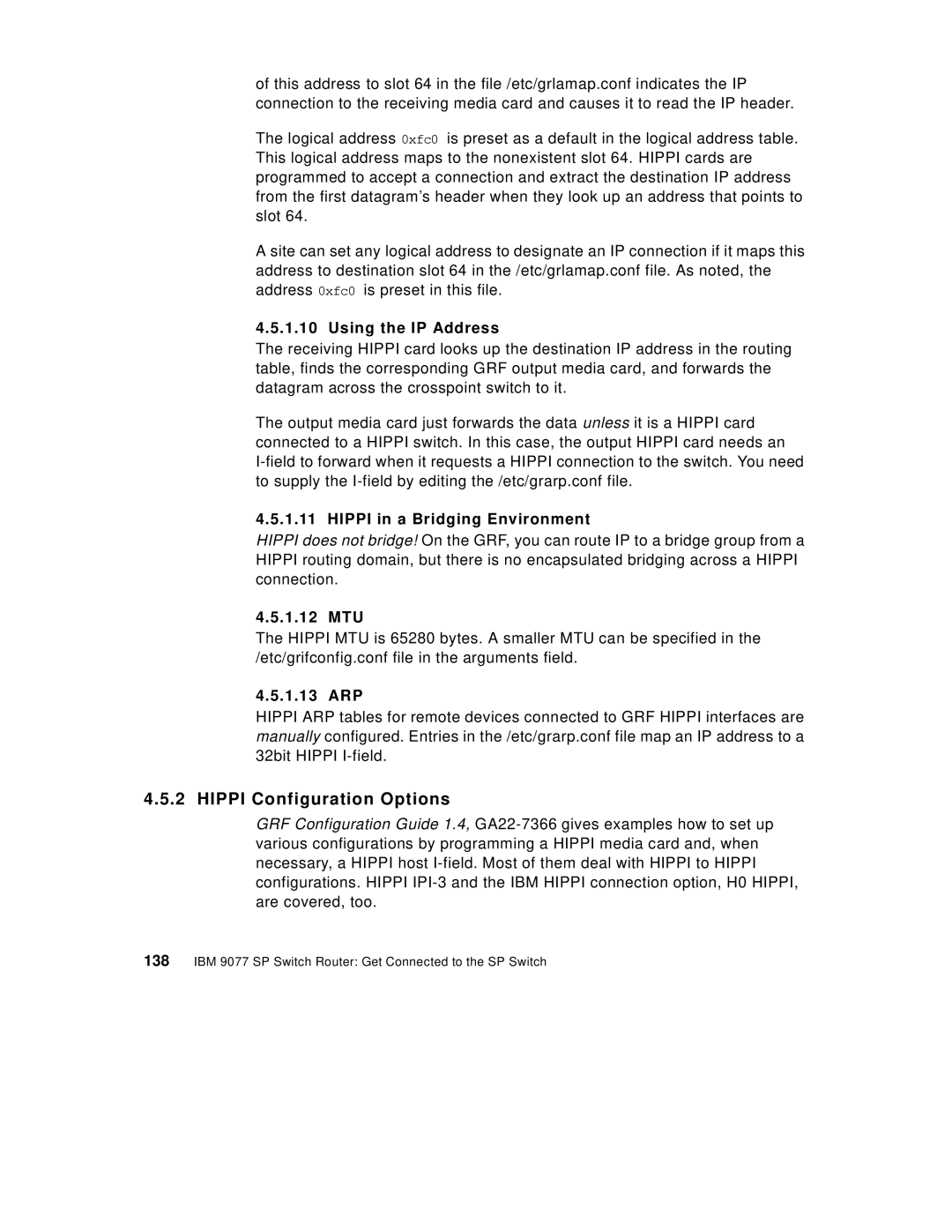of this address to slot 64 in the file /etc/grlamap.conf indicates the IP connection to the receiving media card and causes it to read the IP header.
The logical address 0xfc0 is preset as a default in the logical address table. This logical address maps to the nonexistent slot 64. HIPPI cards are programmed to accept a connection and extract the destination IP address from the first datagram’s header when they look up an address that points to slot 64.
A site can set any logical address to designate an IP connection if it maps this address to destination slot 64 in the /etc/grlamap.conf file. As noted, the address 0xfc0 is preset in this file.
4.5.1.10 Using the IP Address
The receiving HIPPI card looks up the destination IP address in the routing table, finds the corresponding GRF output media card, and forwards the datagram across the crosspoint switch to it.
The output media card just forwards the data unless it is a HIPPI card connected to a HIPPI switch. In this case, the output HIPPI card needs an
4.5.1.11 HIPPI in a Bridging Environment
HIPPI does not bridge! On the GRF, you can route IP to a bridge group from a HIPPI routing domain, but there is no encapsulated bridging across a HIPPI connection.
4.5.1.12 MTU
The HIPPI MTU is 65280 bytes. A smaller MTU can be specified in the /etc/grifconfig.conf file in the arguments field.
4.5.1.13 ARP
HIPPI ARP tables for remote devices connected to GRF HIPPI interfaces are manually configured. Entries in the /etc/grarp.conf file map an IP address to a 32bit HIPPI
4.5.2 HIPPI Configuration Options
GRF Configuration Guide 1.4,
